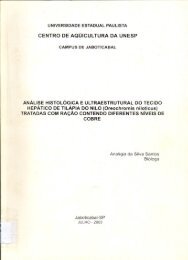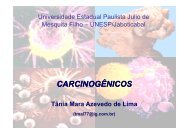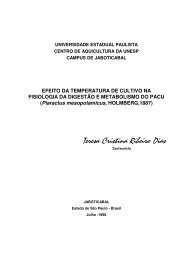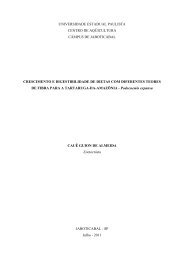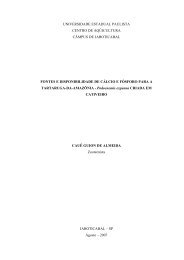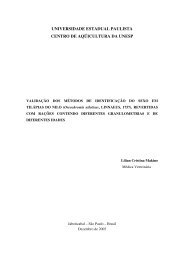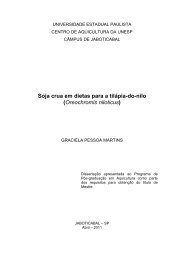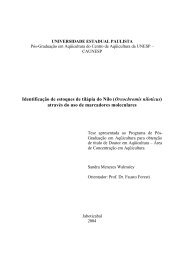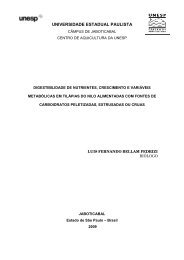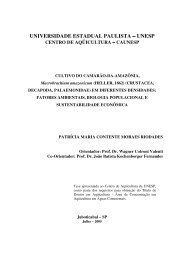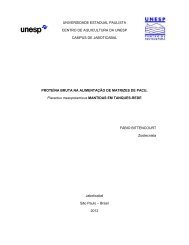Tese Michele Fagundes.pdf - Caunesp
Tese Michele Fagundes.pdf - Caunesp
Tese Michele Fagundes.pdf - Caunesp
Create successful ePaper yourself
Turn your PDF publications into a flip-book with our unique Google optimized e-Paper software.
Abstract<br />
Many physiological and behavioral processes expressed in live organism are<br />
rhythmic and occur in a period of 24 hours, characterizing a circadian rhythm. In most<br />
vertebrates, cortisol has a diel release profile, showing higher levels in the morning<br />
which decrease up to the end of the day, related to a light-dark cycle. The aim of this<br />
study was to evaluate the variation in blood concentrations of cortisol and glucose in<br />
pintado (Pseudoplatystoma corruscans) along 24 hours without a stressful condition in<br />
order to characterize their circadian profile. A total of 144 fish (mean weight 17.2 ± 5.3<br />
g and mean length 15.7 ± 1.4 cm) were distributed into 36 aquaria (n=12) and samplings<br />
were performed at each two hours (6, 8, 10, 12, 14, 16, 18, 20, 22, 24, 2 and 4 hours).<br />
There were not significant differences but the cortisol values presented a clear profile at<br />
day and night, showing peaks at the settling of darkness and light. Blood glucose did not<br />
present correlation to cortisol, keeping its values more stable along the day.<br />
Key-words: Pintado, cortisol, glicemia, circadian rhythm<br />
41



